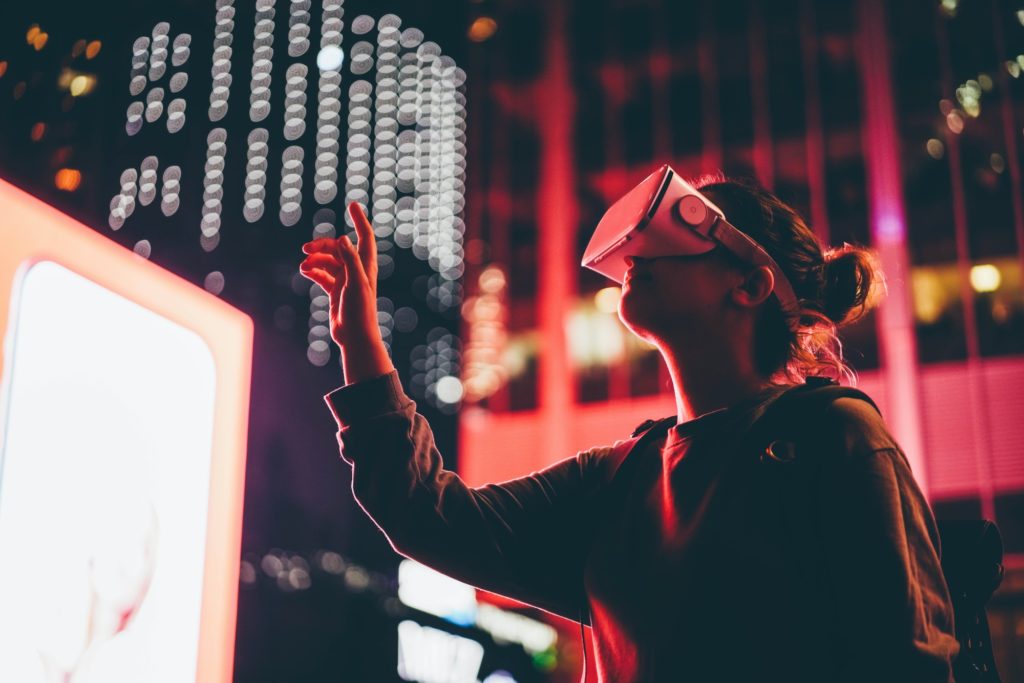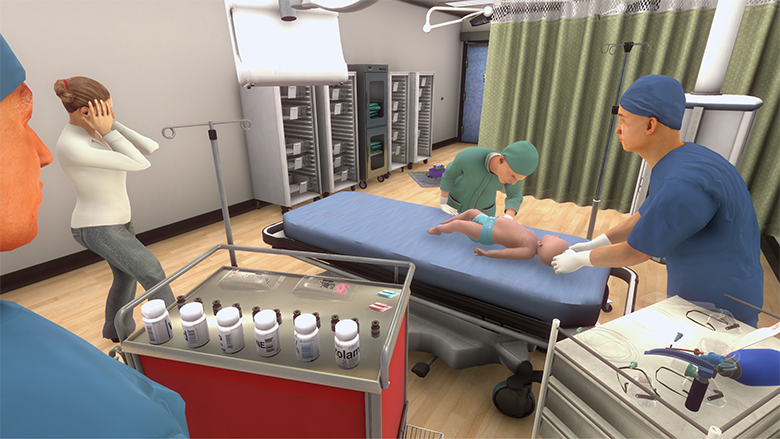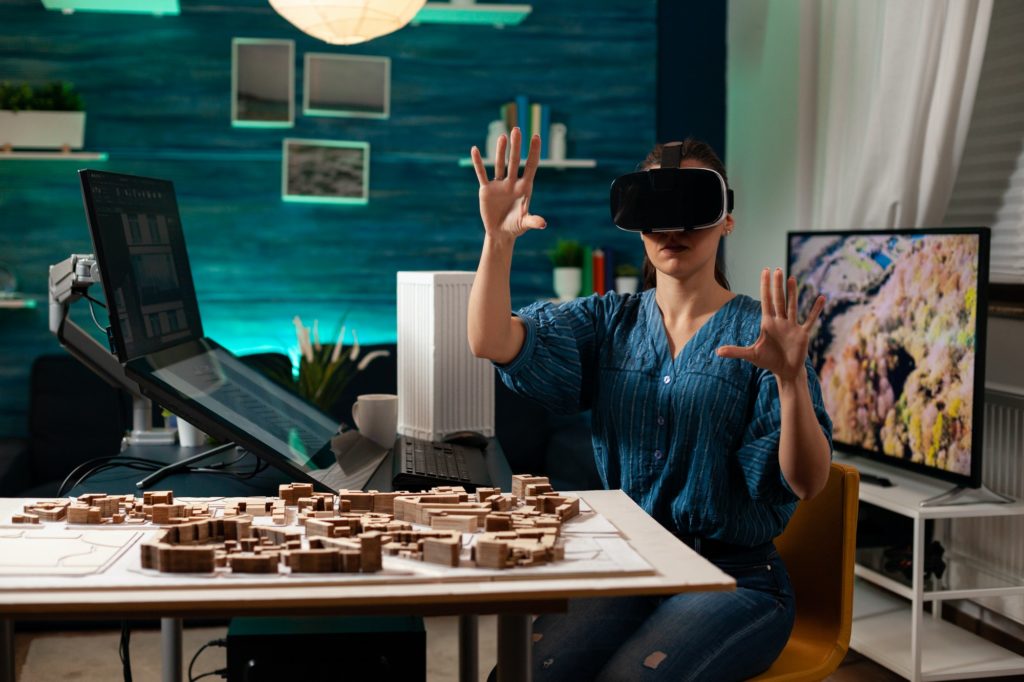How VR is Reshaping Urban Planning
Emerging technologies like virtual reality (VR) have caused a massive disruption amongst AEC industries. As a result, many firms have chosen to implement it into their design workflow in hopes of staying ahead of their competition and meeting their business bottom line. In fact, according to Statista, the market revenue for enterprise usage of virtual reality is projected to amount to $9.18 billion USD by 2023. That’s huge in terms of estimated enterprise growth!
While this increasing usage of VR provides a new avenue for AEC professionals to explore for the years to come, it also leaves many people asking: what’s next?

For many firms, leveraging VR allows them to take bigger leaps in achieving sustainable smart cities in the future. For others, VR brings about opportunities for expedited business growth or better predictive planning.
Whatever result or goal you’re looking for, there’s no denying that VR is a viable tool to implement in your future (or current) urban projects.
But first, what is Virtual Reality?
According to an article by Oculus, VR utilizes “cutting-edge graphics, best-in-class hardware, and artistically rendered experiences to create a computer-simulated environment where you aren’t just a passive participant, but a co-conspirator. With a VR headset, you’re fully absorbed in realistic 3D worlds, creating a major shift in how we experience the digital realm.”
At the heart of it, VR presents a well of potential for any industry. For the entertainment sector, their consumers are able to experience virtual worlds that go beyond imagination. For commercial industries, it could help improve productivity, drive business results, limit undue risk, or save lives.
To better illustrate my point, take a look at what Children’s Hospital Los Angeles achieved with VR.

Source: Oculus Blog
The question now is: how can your business benefit from VR?
1. Enhanced visualization
To ensure your urban projects’ success, you’ll need to be able to express your design in a way that’s easily understood by anyone. It’s a given that, as an urban planner, you’ll be faced with many factors (and voices) that need to be taken into account.
Unfortunately, most ideas are still showcased in a static, 2D format, so it prevents you from having dynamic conversations with your clients, stakeholders, and shareholders. Perhaps, in order to combat this challenge, you’ve begun implementing 3D models into your presentation and design process. And for a while, it works. However, over time, your 3D models end up as a secondary function when it comes to top-down designs. As a result, many of your clients are forced to imagine your ideas, rather than seeing them in a real-time, interactive format, which ends up extending your feedback loop.

Yikes, I know.
Regrettably, city master plans are inherently visual in nature, so demonstrating your plans via 2D methods or maquette models no longer works when you’re trying to conquer this barrier. Luckily, VR can effectively overcome this challenge, as it allows its users to gain a better understanding of your design. This can greatly impact the feedback loop, the project time, and the communication between you and your client overall.
2. Increased productivity
It’s no secret that every urban planner is faced with the challenge of increasing productivity. This is especially important when collaborative work across multiple teams are involved. With the help of VR, you’ll be able to exchange ideas and make better decisions faster in interactive ways.
However, there is one caveat to note; in order to participate in a collaborative environment, you’ll need to utilize a Metaverse or Virtual Collaboration platform to achieve real-time interaction and connectivity. We’ll talk more about how you can acquire one later.
3. Improved disaster planning and urban behavior studies
Source: Pixel Farm
It’s no national secret that simulation is key when it comes to planning for natural disasters. While the first step in the process is to be able to visualize your design, the second step is to be able to test it in varying environments. This is why tools like GIS played an essential role with its ‘after-action reports’.
Virtual reality, on the other hand, is helpful in replicating ‘what-if’ scenarios and the necessary responses to them because of its clear visualization feature. For example, VR can help all involved stakeholders understand the influence of an urban environment with the added factor of human behavior. As a result, it will be easier to adapt your design and improve disaster regulation procedures.
When it comes to urban planning, sustainability is key. Having detailed, up-to-date, and flexible VR models is a big plus when it comes to safety and disaster planning. These VR models can also assist with reconstruction, post-disaster. Overall, the experiential nature of this technology will assist in the mitigation of potential fallouts or flaws.
Now that we’ve established why VR for urban planning is highly beneficial, let’s address the how. There are few different software you can use to implement your design in VR format.
Our Recommendations: VR Creation Platforms

Source: Enscape Malaysia
When it comes to creating your own virtual reality application(s), you have a few ways to achieve it. The most popular platforms are currently Unity and Unreal Engine. However, both of them require heavy coding experience and knowledge. While this may seem like an easy feat for others, it may not be the case for you or your business. Nevertheless, it’s still possible to achieve low-coding to no-coding VR applications.
Unity, on its own, is a fantastic real-time 3D development platform. Not only is it flexible for most business needs, but it offers users a full ecosystem of tools, support, and community to help you achieve better and faster results. Its wide suite of development, CAD, and collaboration tools make VR development easier.
If you’re looking to design your virtual reality application without any heavy coding or extensive third-party support, then RealityTransform® is the ideal software choice for you. With its Unity compatibility feature, RT makes it possible to quickly implement a wide selection of VR simulations and scenarios in real-time. The best part? It’s easy to learn and use, so anyone in your team can create VR applications for your urban projects.
RealityTransform®’s Virtual Collaboration System (VCS)
RealityTransform’s Virtual Collaboration System (VCS) is a great addon solution if you’re looking to take your creations on the go. With VCS, you can easily share your ideas and designs through your laptop, phone, VR headset, Zoom, Metaverse, and more. If you’re looking to present your ideas in real-time, but need to do it remotely, just use VCS. With its secure server capabilities, you can also jump into your own Metaverse or virtual room to share your designs with your clients in ‘person’.
The Bottom Line
Implementing virtual reality into your business is a viable option if you’re looking to mitigate costs, simulate fallouts, increase productivity, shorten the feedback loop, and/or enhance the visualization process. My advice? Include VR into your urban projects if you can. Look for the right software to help you shorten the development time and maximize great results.
Virtual reality is here to stay. The question is: are you prepared to leverage it?

